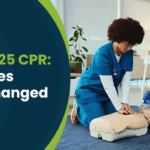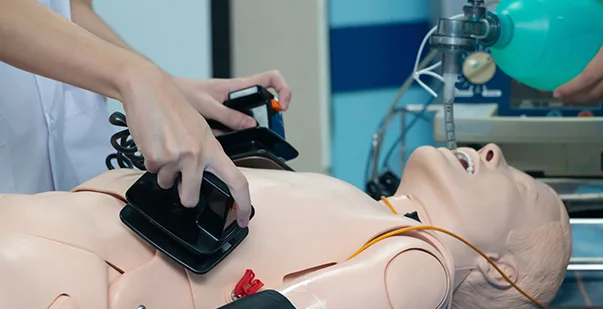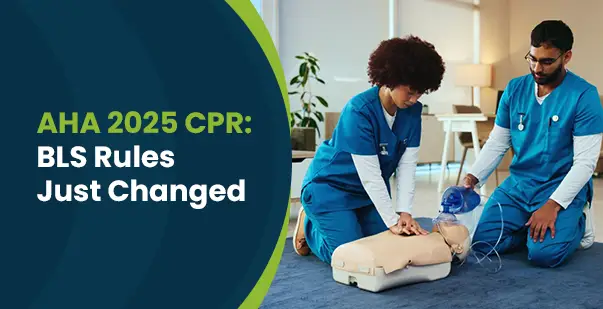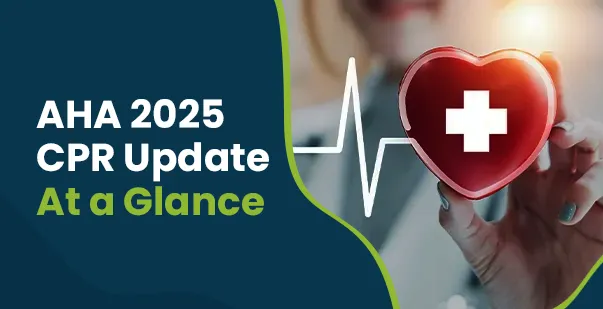Irregular heartbeats can be the root cause of different health issues, such as stroke, heart failure, or a heart attack. To restore their abnormal heartbeat, synchronized cardioversion, a low-energy shock treatment, is given to the patients. Like defibrillation, synchronized cardioversion is delivered across the chest, either by using hands-free pads or placing manual paddles on the chest.
However, unlike the defibrillation process, in synchronized cardioversion, the shock is channeled in different parts of the cardiac cycle. Furthermore, the amount of energy required for cardioversion is less than that required for defibrillation. Doctors generally begin with 50 joules of energy and limit it to 200 joules.
In this blog, we are going to discuss different types of Arrhythmias and their various risk factors and how synchronized cardioversion can treat the issues of cardiovascular arrhythmia. You will also learn about the treatment procedures and their duration and recovery procedures.
Understanding Arrhythmias
Arrhythmias are heart irregularities that affect the ability to pump blood properly. These heart irregularities are categorized by their origin, duration, etc., into various patterns, such as:
- Bradyarrhythmias: The heartbeat becomes slower than normal (below 60 BPM). This condition is very common in athletes and can occur during periods of sleep as well. If it happens symptomatically, then medical intervention becomes mandatory.
- Tachyarrhythmias: In this condition, the heartbeat becomes faster than normal.
- Supraventricular Tachycardia (SVT): A fast heart rate that originates above the ventricles, which often involves sudden episodes of rapid heartbeat.
- Atrial Fibrillation (AFib): In this condition, the upper chambers of the heart (atria) beat irregularly, giving way to erratic electrical signals and an irregular heartbeat. This condition can still lead to heart complications due to the formation of clots, resulting in cardiac arrest.
- Atrial Flutter: While the atria beat rapidly, the electrical impulses follow a more regular pattern, which results in a fast yet structured heart rate.
- Ventricular Tachycardia (VT): The lower chambers (ventricles) beat abnormally fast, which can be life-threatening if left untreated.
- Premature Ventricular Contractions (PVCs): These are the extra heartbeats that originate from the ventricles and causes palpitations.
Symptoms of Arrhythmias
The common symptoms of arrhythmia are as follows:
- Palpitations
- Shortness of breath
- Dizziness
- Discomfort in the chest or pain
- Fatigue
- Sweating
These symptoms can either be experienced all at once or a few at a time. However, as soon as you start experiencing them regularly, don’t hesitate to seek medical help. This could prevent you from experiencing worst-case scenarios like a heart attack or a stroke.
What Is Synchronized Cardioversion?
Synchronized cardioversion is a medical technique used to restore normal heart rhythm in case of certain irregularities. Healthcare providers use various interventions to cardiovert abnormal cardiac rhythms like atrial flutter, atrial fibrillation, and more.
Types of Cardioversion
Cardioversion is a procedure used to restore a normal heart rhythm in people with arrhythmias like atrial fibrillation (AFib). The process typically involves delivering an electric shock to the heart, which helps reset its electrical signals, allowing it to beat normally again. There are two main types of electric cardioversion:
- Monophasic Cardioversion: In this method, the electric shock flows in one direction through the heart. While effective, it often requires higher energy levels to achieve the desired result.
- Biphasic Cardioversion: Here, the shock flows in two directions, which makes it more efficient and often requires less energy. Due to its effectiveness and reduced risk of side effects, this is now the preferred method in most cases.
Cardioversion can also be performed with medications rather than electricity. This is called pharmacological cardioversion. Medications like anticoagulants or beta-blockers can be used to help slow the heart rate and stabilize the rhythm, especially in patients for whom electrical cardioversion isn’t ideal.
For many people with arrhythmias, particularly AFib, cardioversion is a highly effective treatment. Whether electrical or pharmacological, the goal is the same: to help the heart regain its normal rhythm and improve overall function.
Difference Between Cardioversion and Defibrillation
Cardioversion is generally used to handle various kinds of arrhythmias, particularly the ones that are not life-threatening. Synchronized or internal cardioversion for atrial fibrillation and atrial flutter leads to the best patient outcomes. This procedure is performed on stable individuals who experience arrhythmia that can not be resolved normally.
On the other hand, defibrillation is used to treat major arrhythmias. These conditions include ventricular fibrillation or ventricular tachycardia, where the heart beats irregularly or stops completely. Defibrillation is performed in situations where the patient is completely unstable or at the risk of cardiac arrest. Here’s a table showing the difference between the two:
| Feature | Cardioversion | Defibrillation |
| Purpose | Used to correct abnormal but organized heart rhythms (e.g., AFib, atrial flutter) | Used in life-threatening arrhythmias such as ventricular fibrillation or pulseless VT |
| Procedure Type | Synchronized with the patient’s QRS complex | The unsynchronized shock is delivered immediately regardless of the cardiac cycle |
| Energy Levels |
|
|
| Timing | Timed to avoid delivering the shock during the T wave, as this could cause VF | Delivered as soon as possible without regard to cardiac cycle |
| Indications | Used for stable or unstable arrhythmias like AFib, atrial flutter, SVT, VT with a pulse | Used for cardiac arrest situations, such as VF or pulseless VT |
| Patient Consciousness | Often performed on conscious patients under sedation | Performed on unconscious or pulseless patients in emergency situations |
| Risk of Complications | Lower risks as it is synchronized to the heart’s cycle to avoid inducing dangerous rhythms | Risks are higher as the shock is unsynchronized and can affect any part of the cardiac cycle |
| Medications | It can be used in conjunction with antiarrhythmic drugs (e.g., beta-blockers, anticoagulants) | Medications are generally administered post-shock (e.g., epinephrine) |
| Preparations | The patient is often sedated, given oxygen, and monitored for response to therapy | immediate shock delivery is the priority, and no sedation is required |
Read More: What is the Difference Between Asthma and Bronchitis: First Aid for Respiratory Distress
When Is Synchronized Cardioversion Necessary?
Synchronized cardioversion is used for patients with arrhythmias that are not immediately life-threatening but still require emergency treatment to prevent further complications.
- This procedure is often applied to hemodynamically unstable patients (those having irregular blood circulatory systems) suffering from rapid heart rhythms such as atrial flutter, atrial fibrillation, supraventricular tachycardia, or complex QRS tachycardia.
- Complex QRS tachycardia, often associated with ventricular tachycardia, involves a wide and abnormal heart rhythm originating in the ventricles, which needs prompt attention.
- Additionally, synchronized cardioversion is an ideal option when medications do not work or the patient’s condition escalates.
Key Considerations for Patient Assessment
Several factors need to be carefully evaluated before recommending cardioversion sync to your patient. Some of these are as follows:
- Note that the duration of arrhythmias is important, especially when atrial fibrillation lasts more than 48 hours, as it may pose higher risks of blood clotting. This is because an irregular heartbeat can cause blood to pool in the atria, leading to the formation of clots.
- In cases where arrhythmia lasts longer than 48 hours, start anticoagulation therapy for the patient before beginning the procedure.
- Patient stability, which involves assessing blood pressure, heart rate, and other clinical presentations, is another critical factor.
- The patient’s previous treatment history and any underlying health conditions must also be considered.
- The risks and benefits need to be carefully measured before recommending the procedure to the patient.
How To Prepare For Synchronized Cardioversion
Procedure preparation for synchronized cardioversion includes different factors such as pre-procedure evaluation, medication, diet control of patients, and informed consent, among others. Let’s take a look at what each stage means.
- Pre-Procedure Evaluation
Patients with cardiovascular issues who need to undergo synchronized cardioversion should be assessed thoroughly to ensure the effective application of the process on the patients. The pre-procedure check consists of an eECG assessment to determine the heart rhythm and type of arrhythmia. The scans can help your physician find abnormalities or blood clots effectively. Additionally, blood tests, such as thyroid imbalance, electrolyte dysfunction, etc., need to be done to analyze any underlying condition that can potentially influence the procedure.
- Medication and Fasting
Certain blood thinning medications may be required to be applied to minimize the risk of blood clotting. Conversely, certain medications affecting heart rhythm or blood pressure may require to be ceased before the procedure.
You must consult with your healthcare provider properly regarding your medications to avoid unnecessary complications later. Moreover, just before the procedure, you will also need to fast for at least 6 hours to avoid the risk of aspiration.
- Informed Consent
Obtaining informed consent from the patient and their families is an important step when preparing for the procedure. This includes being transparent about the procedure, any expected risks, such as skin burns, arrhythmia recurrence, or chances of stroke incidence, and certain benefits of the procedure. The purpose of this is to help the patients understand the procedure and consent to undergoing it after knowing all the pros and cons.
What to Expect from the Procedure?
Synchronized cardioversion is typically performed within a hospital setting, which can be either an outpatient clinic or a specialized area like an ICU or cardiac catheterization lab. The healthcare facility is equipped with the necessary monitoring devices that can track the patient’s vital signs and heart rhythms throughout the procedure. This ensures safety and prompt responses to any complications.
However, the procedure includes various stages that require different responses, such as:
- Anesthesia
- Shock delivery
- Monitoring the patient’s condition
- Measuring the shock duration
General anesthesia is administered to ensure the patient’s comfort and mild sedation during the procedure. After sedating the patient, electrodes or adhesive pads are attached to the chest or the back of the patient, depending on the technique’s specification. These pads are connected to the defibrillator, which is set to deliver a timely shock.
This shock delivery process is perfectly synchronized with the heart rhythm of the patient to minimize the risk of inducing more serious arrhythmic conditions. The entire procedure takes about 30 – 60 minutes, including preparation, sedation, and recovery time.
Possible Side Effects
After the procedure, the patient may experience mild side effects such as skin redness or irritation where electro pads were attached. The cardioversion death rate is very low (around 1%), so the procedure is quite safe when done by experienced professionals. However, you may experience mild effects like muscle soreness and temporary confusion, which will disappear within a few hours post-operation.
Be Prepared For Cardiac Emergencies With Synchronized Cardioversion!
Synchronized cardioversion is important in managing certain arrhythmias. This simple procedure can help restore the normal rhythm of your heart. It is important to correctly determine the type of abnormalities in the cardiac rhythm and take appropriate measures to treat it. Moreover, creating a transparent and straightforward communication channel with the patient regarding the procedure also impacts the outcome. Effective management of cardiac emergencies relies on quick medical responses. If you want to stay prepared for such situations, you can consider expanding your knowledge with an Advanced Cardiovascular Life Support (ACLS) course and get ready to save lives!
Additional Read –









